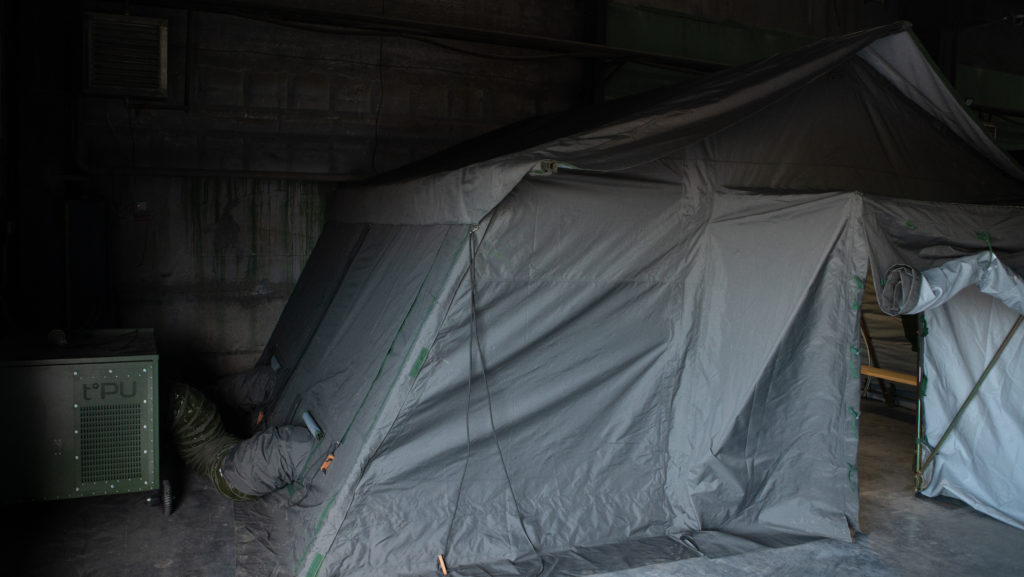The Ukrainian company Thermo Projects Ukraine LLC (a member of the “League of Defense Enterprises of Ukraine”) has been manufacturing high-quality climate control and power supply systems for a long time to create comfortable conditions for both vehicles (tanks, armored cars, command and staff vehicles, boats ), as well as in mobile shelters (mobile hospitals, field canteens, sleeping tents).
The head of the project department, Oleksiy Dankov, told the ArmiyaInform correspondent that the company produced a compact air conditioner “Borey Tent” for cooling and heating temporary and mobile shelters. First of all, this product will be relevant for the Armed Forces of Ukraine. It is able to create comfortable conditions for personnel, in particular in sleeping tents during field trips and exercises/training.
This air conditioner turned out to be compact, functional and easy to use. The basis of the system is a small block mounted on a rigid steel frame, so it is convenient to transport. It is also possible to quickly prepare it for work – it is enough to connect it to a 380V power grid. Domestic development is advantageously distinguished by Ukrainian design, high quality assembly and the use of the most modern European components. For its part, this ensures reliability in use, quick creation and maintenance of a comfortable temperature in any temporary and mobile structures.

The development is presented in two versions – the air conditioning power is 12 and 17 kW, respectively, and the heating power is 12 kW. The fan capacity is 4000 m3 per hour, while the noise level is only 65 dB. All air conditioners are equipped, in particular, with their own temperature sensors, air ducts for supplying and dissipating cold or hot air inside the tent, as well as organizing the recirculation process. Management of the complex is simple and intuitive, carried out with one toggle switch.
For the convenience of using the air conditioner, the developers provided for the possibility of installing a control panel inside the tent – an additional remote temperature sensor. This was done in order not to have to go outside in difficult weather conditions to adjust the device’s operating mode.
Material ArmyInform
Photo by Dmytro Yurchenko

